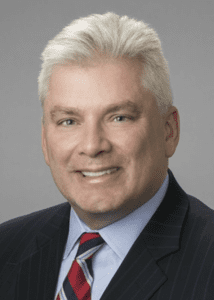Action Needed Now to Support New Power Transmission Capacity
The Federal Energy Regulatory Commission (FERC) in its March 2024 open meeting made clear that successful energy transition requires immediate action. With the Inflation Reduction Act (IRA) as a benchmark, the U.S. will need to expand its electrical transmission capacity at an annual rate double that seen between 1978 and 2020, as reported by the Rapid Energy Policy Evaluation and Analysis Toolkit in 2022. This amounts to at least a 60% expansion by 2030, according to a 2023 article from the Department of Energy (DOE).
Transmission capacity is being pushed beyond its limits, as detailed in a December 2023 report by consulting firm Grid Strategies, and high-volume transmission lines take years to build, hampering investment, as reported by the Institute for Progress in February 2024. To realize the IRA’s emissions reduction potential and the Biden administration’s goals for a carbon pollution-free power sector by 2035, a multifaceted approach is paramount. This includes reforming the permitting process to enable faster, more efficient project evaluation with more predictable outcomes.
COMMENTARY
Ideally, Congress would be the change agent that paves the way for infrastructure investment. Indeed, there are hopeful signs for congressional permitting reforms, but election year rancor may thwart legislation. With DOE spending insufficient to address outstanding transmission capacity needs, and FERC’s efforts to expedite interconnections not expected to fill the void, states need to step into the fray. Combined with congressional reform, DOE investments, and FERC regulations, increased state spending could be the key to fast-tracking transmission development, as noted in a primer published by the National Conference of State Legislatures in December 2023.
Congressional Gridlock and Potential
According to the Environmental and Energy Study Institute and the Center for Strategic and International Studies, landmark legislation like the IRA, the Infrastructure Investment and Jobs Act (IIJA), and the Fiscal Responsibility Act of 2023 (FRA) have helped move permitting reform. However, Politico Pro pointed out in January 2024 that the looming election in November spells gridlock.

Permitting reform is critical for expanding the country’s energy infrastructure and investment. With incentives already in place, permitting reform at the federal level would remove a major impediment to this much-needed infrastructure investment—according to both a March 2024 study by Business Roundtable and a July 2023 press release from the Center for Climate and Energy Solutions—thereby allowing state utility regulators to leverage federal support and reforms needed to spur new transmission projects, as noted in a May 2023 White House briefing.
The FRA ordered a two-year transmission transfer capacity study across transmission planning regions, but the measure does not address the need for immediate action, as reported in a June 2023 article by the Kleinman Center for Energy Policy.
The Clean Energy and Transmission Acceleration (CETA) Act aims to support transmission lines and grid resilience. Under CETA, FERC would be granted authority to promulgate new rules that spur transmission development. CETA would also promote the development of renewable energy on public lands and include a 30% transmission investment tax credit.
However, the Bipartisan Policy Center’s January 2024 report on permitting reform noted that proposals to increase FERC’s authority are unlikely to pass, although CETA’s interregional transmission proposals hold promise.
With Congress unlikely to be the driving force behind transmission expansion in the near future, the executive branch must play a greater role in incentivizing increases in transmission capacity.
Department of Energy—Grid Deployment Office
Established in 2022, the Grid Deployment Office (GDO) oversees a variety of funding opportunities under both the National Interest Electric Transmission Corridor (NIETC) designation process and funds allocated under the IIJA and IRA.
In December 2023, the DOE announced its final guidance on NIETC designations, which allow FERC to grant permits for transmission siting. A NIETC designation also opens projects to funding under the IRA’s $2 billion direct loan Transmission Facility Financing Program and the GDO’s Transmission Facilitation Program (TFP), a $2.5 billion revolving fund.

In October 2023, GDO awarded $1.3 billion of TFP funding to three projects across six states, adding 3.5 GW of grid capacity. The TFP requires the DOE to purchase a percentage of the total proposed capacity, acting as an anchor customer to encourage overall financing, as noted in Evergreen Action’s December 2023 report.
The GDO’s Grid Resilience and Innovation Partnerships (GRIP) Program allocates $10.5 billion to improve grid resilience and flexibility. The first round of GRIP grants ($3.46 billion awarded in October 2023) marked the largest-ever single investment in the grid. Two of GRIP’s three separate funding mechanisms—Smart Grid Grants and the Grid Innovation Program—target projects that increase transmission system capacity.
Smart Grid Grants provide $600 million annually between 2022–2026 to incorporate new technologies into the grid, including replacing AC transmission with HVDC transmission to improve power flow control technology and capacity.
The Grid Innovation Program provides $5 billion between 2022–2026 to government entities that use innovative approaches to transmission, storage, and distribution infrastructure, including projects that integrate renewable energy sources into the grid, coupled with increases in transmission capacity, such as a project in rural Georgia described in a GDO fact sheet from October 2023.
But with 2 TW of generation and storage projects in the interconnection queue, articles published by CNBC and the Rocky Mountain Institute in 2023 pointed out that these initiatives provide only a fraction of the needed capacity increases.
New FERC Rules and Proposals
FERC has been working on new rules to shorten review timelines for transmission projects and increase overall system reliability in the face of projected rapid increases in electricity demand, according to the December 2023 report by Grid Strategies. FERC issued a new rule on interconnection—Improvements to Generator Interconnection Procedures and Agreements—in November 2023, setting deadlines and penalties for transmission providers that fail to complete studies of proposed generating facilities on time. Though this rule will allow more solar and wind projects to connect to the grid by shortening lengthy interconnection backlogs, the main cause of the backlogs is still a lack of transmission capacity.
To address the issue of transmission capacity more directly, in 2022, FERC proposed its most comprehensive transmission-related regulation in over a decade, according to an S&P Global Market Intelligence article from March 2024. FERC’s 2022 Notice of Proposed Rulemaking requires transmission providers to undertake regional transmission planning on a forward-looking basis and to incorporate state-level decision-makers into the approval process for cost-allocation in regional transmission—something that most utilities and regional transmission operators do not currently do.
The rule is expected to include requirements to incorporate advanced technologies that increase the capacity of existing transmission infrastructure and account for future projects beyond the immediate areas of production, per a July 2022 article by Evergreen Action. Together, these steps would help to reduce energy losses, decrease congestion due to outages, and improve grid reliability.
The pressure is on for FERC to complete its rulemaking process quickly, with newly nominated commissioners waiting in the wings, as noted in S&P Global’s March 2024 article. While FERC’s rule represents a substantive effort in the right direction, it could still face legal challenges, according to a March 2024 article by Axios Pro, meaning state-level permitting reforms are crucial.
State-Level Successes
In 2023, Michigan and Minnesota enacted legislation to decarbonize each state’s electric grid by 2040, joining 21 other states, the District of Columbia, and Puerto Rico in planning for carbon-free electric grids, with the intent of each bill to encourage further development of green energy. Both states have utilized federal funding from GDO. Under GRIP, the DOE awarded Minnesota $50 million in grants to improve electric grid resilience and capacity by funding the HVDC conversion of existing transmission lines. This interregional project connecting Minnesota and North Dakota directly leverages Minnesota’s carbon-free electricity goal and existing infrastructure, as reported by MPR News in October 2023. In Michigan, the DOE allocated $100 million under GRIP to increase capacity at local substations in disadvantaged communities, improving the existing infrastructure to boost reliability. Though other states have enacted similar legislation to decarbonize their grids, not all of them have also pressed to increase transmission and grid capacity, leaving new developments offline.
California consolidated its permitting process in an effort to push the permitting of renewable projects and associated transmission lines to under one year, according to a World Resources Institute report from February 2023. Similarly, New York expedited its permitting process for transmission lines on existing rights-of-way, and Minnesota revised its permitting requirements to eliminate a Certificate of Need for wind and solar projects by independent power producers. A new proposal has been introduced to build off of these changes, potentially reducing the average total project time, according to a Minnesota Star Tribune article from January 2024.
Next Steps
The current lack of transmission capacity in the U.S. may be the largest barrier to meeting the IRA’s emissions reduction potential and decarbonizing the grid. The IIJA and IRA have laid the foundation for considerable public and private investment in clean energy production, but this has not been met with an adequate response from transmission providers. Major progress in Congress is unlikely, meaning the GDO will need to rely on its current funding to prioritize projects that increase transmission capacity.
FERC must implement its transmission reform rule as quickly as possible and provide the incentives it can to spur transmission development. States must also continue to take advantage of GDO funding while making the most of the tools they have at hand. Together, the U.S. will realize the benefits of a more resilient grid and meet the increasing need for electricity.
—Ken Irvin is a partner in the Washington, D.C. office of Sidley Austin LLP and co-head of the firm’s global Energy practice. Charlie Peskin is an associate in Sidley’s Energy practice. The views expressed here are solely those of the authors.